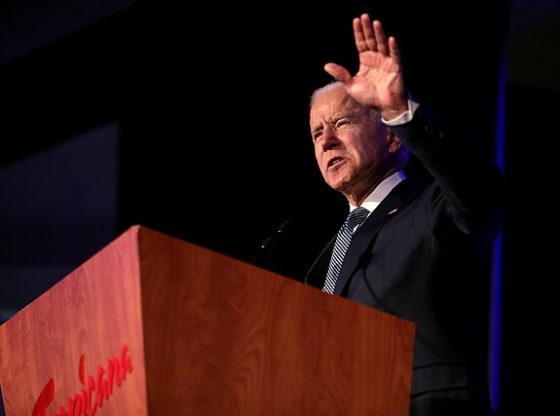Utah, Idaho and Wyoming all share common borders and something else that matters more.
According to data the Census Bureau gathered in 2020, these were three of the four states that had the highest percentages of households headed by married couples of the opposite sex.
New Hampshire also ranked in the top four.
In 2020, 57.8% of the households in Utah were headed by married couples of the opposite sex. In Idaho, it was 53.7%.
However, these were the only states in the country where the percentage of households headed by opposite-sex married couples constituted a majority of all households. In New Hampshire, which ranked third, only 49.4% of households were headed by opposite-sex married couples. In Wyoming, which ranked fourth, it was 48.9%.
Rounding out the top 10 states when ranked by this demographic were Kansas (48.5%); Nebraska (48.5%); Minnesota (48.4%); New Jersey (48.3%); Hawaii (48.2%) and Iowa (48.2%).
Which states ranked at the bottom for the percentage of households headed by opposite-sex married couples?
New York came in last. Only 40.6% of the households there were headed by opposite-sex married couples. Louisiana was next-to-last at 40.7%; and Rhode Island and New Mexico were tied for second-to-last at 41.3%.
The rest of the bottom 10 included Mississippi (41.5%); Ohio (43.9%); Massachusetts (44.1%); Alabama (44.3%) and Georgia (44.7%).
Although the District of Columbia — our nation’s capital — is not a state, the Census Bureau included it in its data table that presented the state-by-state percentages of households headed by opposite-sex married couples. Had it been a state, the District of Columbia would have finished in last place — by far. Only 22.8% of the households there were headed by opposite-sex married couples.
In a majority of this nation’s states (31 out of 50), the percentage of households headed by opposite-sex married couples was at least double the 22.8% the Census Bureau reported for the nation’s capital.
“While married-couple households made up the greatest proportion of coupled households, their share has been in steady decline over the past several decades,” the Census Bureau said in an analysis published last week. “From 1968 to 2018, the share of adults ages 25 to 34 living with a spouse decreased from 81.5 percent to 40.3 percent, while the share living with an unmarried partner increased from 0.2 percent to 14.8 percent.”
In 2020, the Census Bureau expanded its data collection on American “couples.”
“The U.S. Census Bureau revised the relationship to householder question in the 2020 Census to improve the quality of coupled-household data after discovering issues with the measurement of coupled households in the 2010 Census,” the bureau said in a May 25, 2023, release. One revision included adding “specific answer categories for opposite-sex spouse; opposite-sex unmarried partner, same-sex spouse, same-sex unmarried partner.”
So, which states in 2020 had the highest percentages of households headed by opposite-sex unmarried couples?
Vermont led the nation with 9.0%.
The top 10 also included Maine (8.9%); Oregon (8.2%); Alaska (8.1%); Nevada (8.1%); New Hampshire (8.1%); New Mexico (7.6%); Washington (7.6%); Wisconsin (7.6%); and Arizona and Rhode Island tied with 7.3%.
Utah, which led the nation with 57.8% of its households headed by opposite-sex married couples, tied Alabama for the smallest percentage of households headed by opposite-sex unmarried couples (4.9%).
Following Utah and Alabama at the bottom of this category were Mississippi (5.2%); South Carolina (5.5%); Georgia (5.6%); Virginia (5.7%); Texas (5.7%); New Jersey (5.8%); North Carolina (5.9%); Maryland (5.9%) and Arkansas (5.9%).
There were two other categories where the Census Bureau data showed that the District of Columbia beat all the states. These were the percentages of households headed by married and unmarried same-sex couples.
In our nation’s capital, according to the Census Bureau, 1.2% of the households were headed by unmarried same-sex couples, and 1.4% were headed by married same-sex couples.
No state had even 1% in either of these categories. Fourteen states — including California, New York and Massachusetts — led the other states with 0.5% of their households headed by unmarried same-sex couples. Four states — including Hawaii, Massachusetts, Delaware and Vermont — led the other states with 0.8% of their households headed by married same-sex couples.
The decline in the traditional family — headed by a married mother and father — is a decline for America.
As this column has noted before, traditional family life correlates with financial well-being. In 2022, according to the Census Bureau, married-couple households had the highest median incomes and lowest poverty rate.
The median household income for a married-couple family that year was $110,800 — compared to $51,930 for a male householder living in a nonfamily household and $40,200 for a female householder living in a nonfamily household.
That same year, 6.9% of married-couple families with children under 18 lived in poverty, according to the Census Bureau, while 37.2% of female householders with children under 18 and no spouse present lived in poverty, and 18.3% of male householders with children under 18 and no spouse present lived in poverty.
In 1798, President John Adams sent a message to a Massachusetts militia. “[W]we have no government armed with power capable of contending with human passions unbridled by morality and religion,” he said.
“Our Constitution was made only for a moral and religious people,” he said. “It is wholly inadequate to the government of any other.”
John Adams was right.












